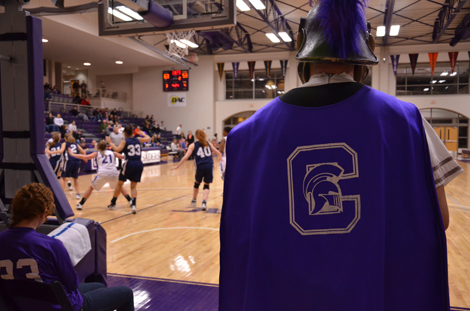In the fall of 2018, a movement was started to change the mascot from the crusader to something new. The movement was formed by a group of staff and students. Though the movement started months ago, the push is still going strong.
This group believes that the crusader does not fit with Capital’s policy of inclusion and diversity, and could possibly be found offensive by students of Muslim or Jewish background.
An actual petition was introduced by students near the end of October, and has been accumulating signatures ever since. Spearheading the petition effort is senior religion major Moriah Reichert, who says that the mascot issue has been present longer than many students may realize.
“I know it’s been conversation on campus at least since the 1980s,” Reichert said about the debate over the crusader. She said she has family and friends who have told her that even 30 years ago, the mascot was a topic of debate.
Reichert also said that the petition has received signatures from people who were students as far back as the 1970s, which further emphasizes the longevity of the mascot issue.
In addition to support within the university, Reichert said that she has gathered signatures from outside campus as well.
“We have seen efforts in Bexley specifically to be more inclusive,” Reichert said.
Although the efforts are not specifically related to Capital or the mascot change, Reichart is optimistic that this climate will help her cause, and said that there is “potential to get the community involved” and that she has “not yet accessed the greater support of the community in Bexley yet.”

On Jan. 4, the petition was presented to several influential outlets on campus in hopes of moving the project forward. President Beth Paul, Provost Jody Fournier, the athletic department, and marketing all received the petition. Two petitions were submitted as a package, one drawn up by Reichert and a group of students and another faculty petition led by Dr. Sally Stamper, religion professor, and Rev. Drew Tucker, campus pastor.
The gravity that the petition has is not lost on Reichert.
“We recognize that this has a number of effects for a number of individuals and offices across campus in a more specific way,” Reichert said.
One of the major obstacles that still faces Reichert and the movement she is helping lead is picking a new mascot for Capital. She says that in addition to introducing the petition, she and some of her partners tabled in the Student Union to draft student suggestions for new mascots.
In addition to a plethora of new suggestions, one of the more prominent answers was to maintain the current mascot. Reichert reports “a number of people who thought the mascot should stay the crusader.”
While the movement to change Capital’s mascot is still underway, there is also a great deal of student support to maintain the crusader.
The petition is still open for signatures, but Reichert promises that if her group does not get a response soon, there will be “a serious conversation” about how to galvanize their supporters both on and off campus.
Whether or not these efforts actually change the university mascot, there is no doubt that this is a pivotal time for Capital and especially for the students and staff on the front lines. The petition is still available on the Embrace Facebook page.

